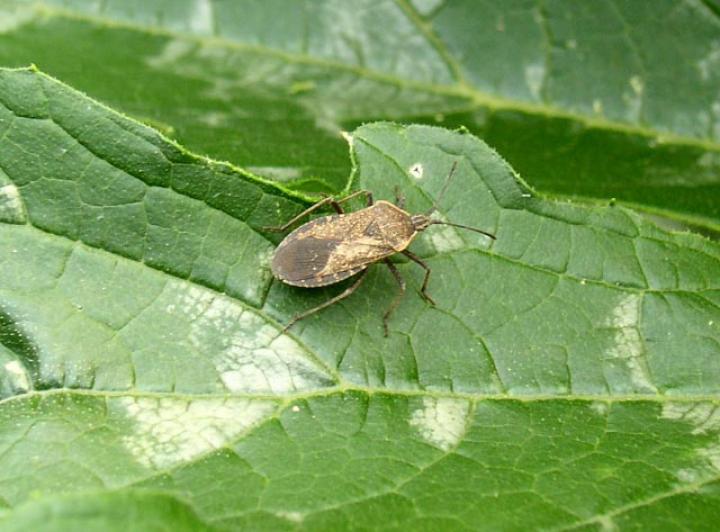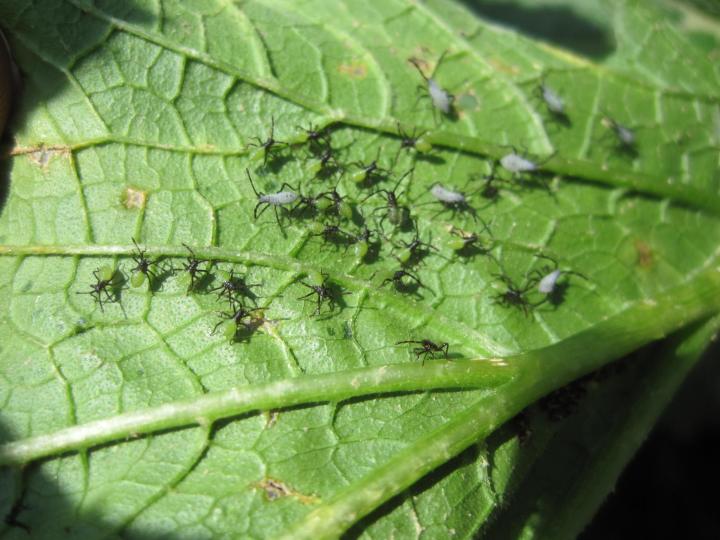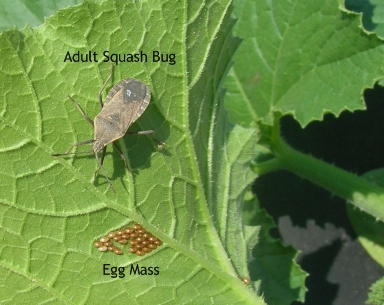






The squash bug is sometimes confused with a stink bug, but it can cause much more damage to your plants.
Barbara PleasantWhat are those bugs on your squash? Here are tips on how to identify, control, and get rid of squash bugs.
Squash bugs are the bane of a gardener's existence! They are very difficult to kill and cause havoc. Squash bugs are most commonly found on squash plants (hence the name), but they also often appear on pumpkins. Their damage is limited to the cucurbit family. Other pests that are commonly found on squash include squash vine borers.
Squash bugs are often mistaken for stink bugs, as they are similar in appearance and both have a foul odor when squashed. However, stink bugs are wider and rounder than squash bugs.
The squash bug is fairly large (over ½-inch long) with a brownish or gray body and flat back. The edges and undersides of the abdomen have orange stripes. They are able to fly, but they often simply walk around on plants. Young squash bugs, or squash bug nymps, are gray and have black legs. They move quickly and often in groups on the undersides of leaves.

Squash bugs overwinter in your dead leaves, vines, under boards, and even in buildings. They fly to the plants as soon as vines start forming to mate, and they lay egg masses on the undersides of the leaves. You’ll find adults beneath damaged leaves and near the plant crown.

These bugs inject a toxin into the plant and suck the sap right out of it with their sharp, sucking mouthparts. This causes yellow spots that eventually turn brown. The leaves will wilt because the damage prevents the flow of nutrients to the leaves, and then they will dry up and turn black, crisp, and brittle. The leaves also sometimes have ragged holes. Smaller plants will die, and squash bug feeding can decimate young fruit.
The wilting can resemble bacterial wilt, which is a disease spread by cucumber beetles (another squash pest), so be sure to find the bugs or eggs and identify them correctly.
How to Control Pests and Termites
Home and Garden Pest Control Information
Anthracnose: How to Identify, Control, and Prevent Anthracnose
Mosaic Viruses: How to Identify, Control, and Prevent Mosaic Viruses
Cabbage Root Maggots: How to Identify and Get Rid of Garden Pests
Mexican Bean Beetles: How to Identify and Get Rid of Garden Pests
Squirrels: How to Identify, Control, and Get Rid of Squirrels in Your Garden
Organic Cabbage And How To Control Cabbage Pests
Stop Squash Bugs in Your Garden
Blossom-End Rot: How to Identify, Control, and Prevent Diseases
Gray Mold: How to Identify, Control, and Prevent Botrytis
Cutworms: How to Identify and Get Rid of Cutworms in Your Garden
Copyright © www.100flowers.win Botanic Garden All Rights Reserved